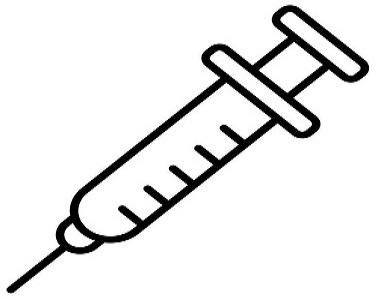
Rabies Immunoglobulin
৳ 1000.00
Indications
For the seroprophylaxis (prevention by injecting antibodies) of rabies in subjects suspected to have been exposed to the rabies virus, particularly in the event of severe exposure e.g.:
- Multiple transdermal bites or scratches
- Contamination of mucous membrane with saliva
- Severe bites located on the face, head, neck and hands
- When the domestic or wild animal responsible cannot be examined or is infected or suspected to be infected by the rabies virus
- Bites to young children
Rabies Immunoglobulin provides passive immunization against rabies for prevention of rabies in patients after contact with a rabid animal or an animal presumed to be rabid. Anti rabies serum itself does not constitute an anti-rabies treatment and should always be used in conjunction with rabies vaccine.
Dosage & Administration
First-aid treatment: Prompt local treatment of bite wounds and scratches that may be contaminated with rabies virus is important, whatever the time elapsed since the contact. The recommended first-aid measures consist of immediate flushing and washing of the wound with soap and water, detergent or other substance of proven lethal effect on rabies virus. The rabies immune globulin should be injected as soon as possible after exposure.
The recommended dose for both adults and children is 40 IU/kg of body weight. If anatomically feasible, as much as possible of the dose should be infiltrated around and into the wound(s). The remainder should be administered intramuscularly (into the gluteal region) in a single injection.
However, for children, particularly in the case of multiple wounds, it has been proposed to dilute the dose 2-3 times in a 0.9% sodium chloride solution to obtain a sufficient quantity of equine rabies immune globulin to infiltrate the wound(s) correctly. Wounds in certain anatomical sites (fingertips) should be infiltrated with care so as to prevent a local increase in pressure in the tissue.
For prevention of rabies, combined immune globulin-vaccine treatment is recommended. The 1st dose of the rabies vaccine should be given at the same time as the Rabies immunoglobulin, but in different parts of the body. If Rabies immunoglobulin is not available when the rabies vaccine is administered, it can be administered up to the 7th or 8th day after the first dose of rabies vaccine. When indicated, begin anti-tetanus treatment and administer anti-microbial drugs to control infections other than rabies.
The WHO expert committee on rabies has issued the following therapeutic recommendations:
Category Type of contact with a suspect or confirmed rabid domestic or wild animal or animal not available for observation Recommended Treatment:
- Touching or feeding, licks on intact skin None, if reliable case history is available
- Nibbling of uncovered skin, minor scratches superficial bites (except on head, neck, shoulder girdle, arms or hands) or abrasions without bleeding, licks on broken skin. Administer vaccine immediately on Day 0, D3, D7, D14 and D28. Stop treatment if animal remains healthy throughout the observation period of 10 days or if animal is killed humanely and found to be negative by appropriate laboratory techniques.
Single or multiple transdermal bites or scratches specially on head, neck, shoulder girdle,arms or hands. Contamination of mucus membrane with saliva (i.e. licks on broken skin). Administer rabies vaccine immediately on Day 0, D3, D7, D14 and D28 or D90 (optional) and rabies immune globulin on D0 immediately. Stop treatment if animal remains healthy throughout the observation period of 10 days or if animal is killed humanely and found to be negative by appropriate laboratory techniques.
Contraindications
Known history of allergic symptoms to horse proteins. Nevertheless, the lethal risk associated with rabies overcomes any potential contraindication.
Side Effects
Immediate or delayed hypersensitive type reactions may be developed on administration of rabies immune globulin. The observed immediate reactions are hypotension, dyspnoea, and urticaria. Delayed reactions consist of inflammatory reaction, fever, pruritis, rash or urticaria, adenopathy and arthralgia.
Pregnancy & Lactation
The safety of rabies immune globulin when used during pregnancy has not been established in clinical trials in human beings. Considering the lethal risk associated with rabies, pregnancy may not be a contraindication to the administration of rabies immune globulin subsequent to exposure.
Precautions & Warnings
Do not administer rabies immunoglobulin intravenously (due to the risk of shock i.e., sudden collapse with drop in blood pressure). Consequently, make sure that the needle has not penetrated a blood vessel. Rabies immunoglobulin should not be administered in repeated doses. Once the vaccine treatment has been started, repeating injections of rabies immunoglobulin may reduce the protective efficacy that must be guaranteed by the vaccine. Shake well before use. Do not shake vigorously.
Overdose Effects
If the recommended dosage is not strictly observed, there is a risk of immunosuppressive interference (suppression of immune defenses) with rabies vaccine.
Therapeutic Class : Vaccines, Anti-sera & Immunoglobulin
Storage Conditions
Keep out of the reach and sight of children. Store at 2°C to 8°C. Transportation should also be at 2°C to 8°C. Protect from light. Do not freeze.